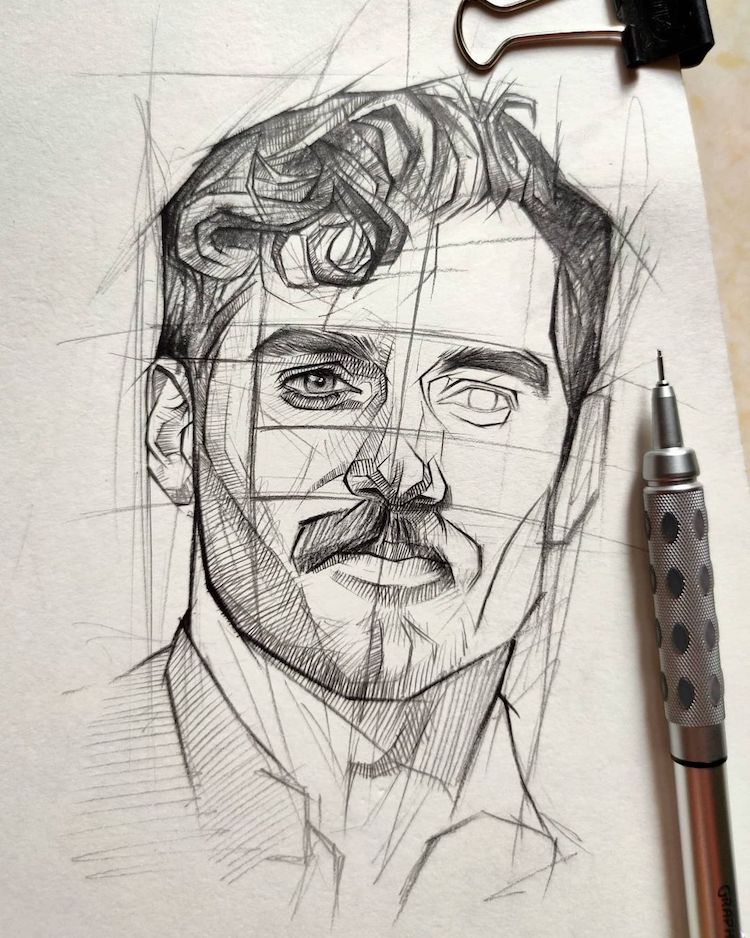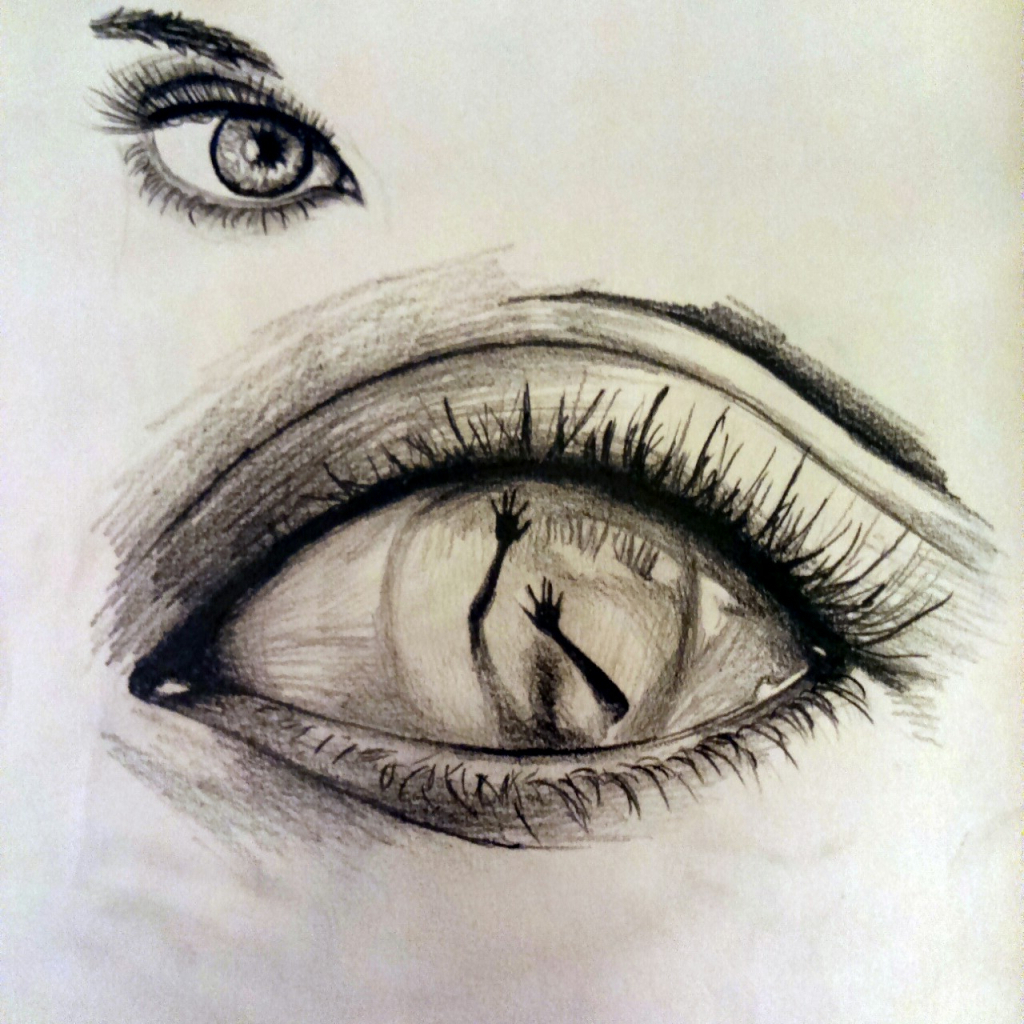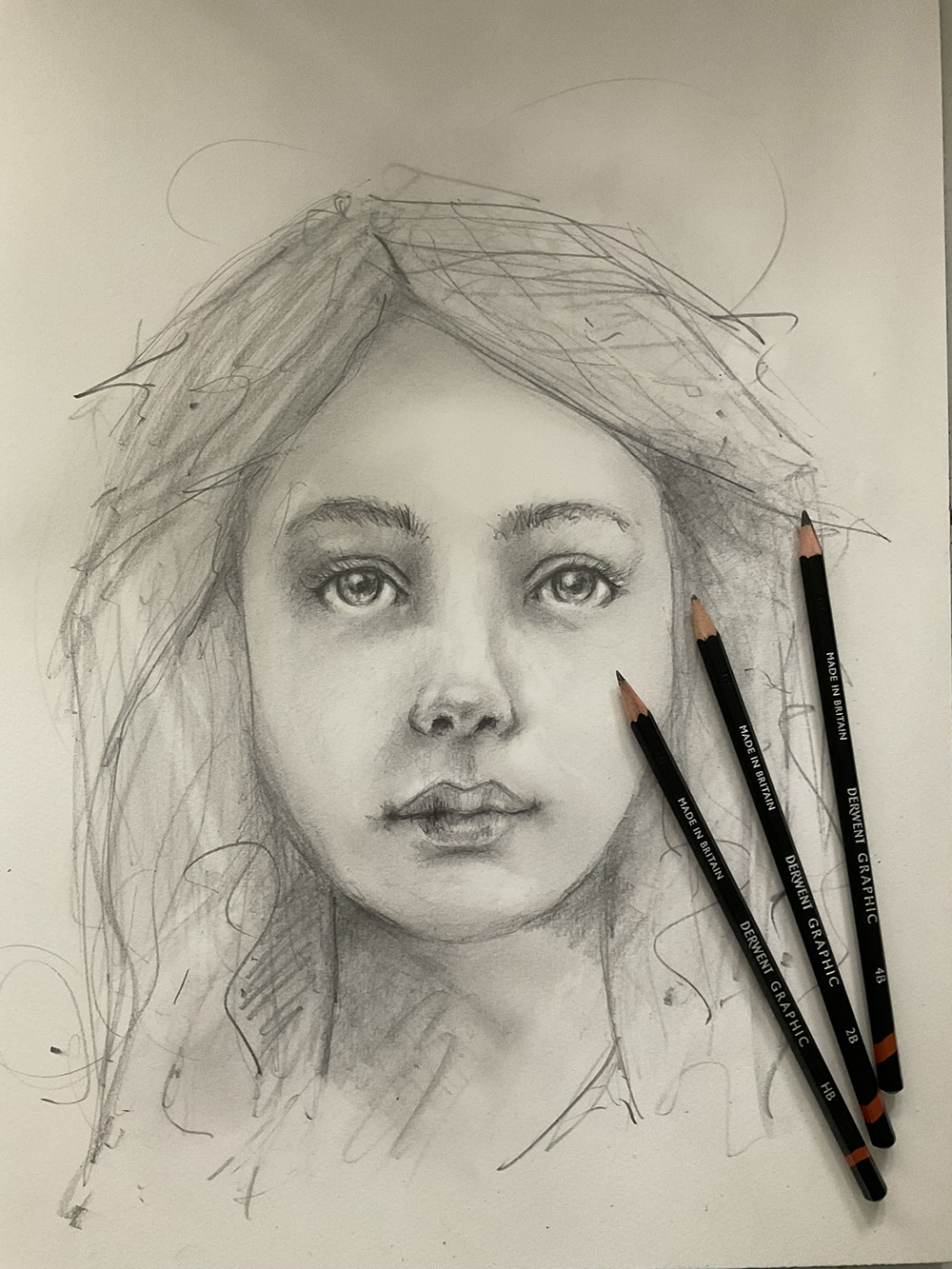Have you ever stopped to think about the quiet power held within a simple sketch? It's pretty amazing, really, how a quick drawing or a rough outline can hold so much potential. From a simple doodle on a napkin to a detailed blueprint for a new digital experience, the act of sketching, in all its many forms, holds a sort of hidden worth. We are going to look at how these seemingly small beginnings contribute to something much bigger, a sort of cumulative worth that touches many different parts of our lives, both personal and professional, so you know.
This idea of "sketch networth" isn't just about money, you see. It's more about the accumulated value that comes from putting ideas down quickly, trying out new thoughts, and building things from the ground up, even if they start out a bit rough. It's about the freedom to experiment, to share what's in your head, and to bring something new into being, whether it's a piece of art, a software interface, or even a moment of laughter, which is that.
What we'll explore here is how various tools and ways of thinking about "sketching" contribute to this overall value. We'll peek into how a basic drawing app helps you make and share pictures, how professional design software lets people craft digital spaces, and even how a funny performance piece builds a connection with an audience. It's pretty clear that there's a lot more to a simple sketch than meets the eye, in a way.
Table of Contents
- What's the Real Value of a Quick Sketch?
- How Do Digital Design Tools Build Sketch Networth?
- Can 3D Models Add to Your Sketch Networth?
- What About Sketch Comedy's Place in Sketch Networth?
- Why Does Openness Matter for Sketch Networth?
- Is Accessibility a Key to Sketch Networth?
- How Does Community and Support Factor into Sketch Networth?
- The Future of Your Creative Sketch Networth
What's the Real Value of a Quick Sketch?
When you think about the worth of a sketch, it often starts with the very first mark made on a surface. There are many simple, free online tools available that let anyone, no matter their age, start making digital pictures. These applications are for everyone, giving people a chance to bring their creative thoughts to life and then share them with others. You can, for instance, get your finished artwork out into the world in common picture file types, like JPEG or PNG, or even as a vector graphic like SVG, and documents like PDF, so it's very versatile, in some respects.
Beyond just making pretty pictures, a freehand drawing tool offers a way to sort out your thoughts and link ideas together at a quick pace. This is really helpful for brainstorming or for just getting a general idea down before it slips away. It's a method for mapping out what's in your head, helping you to connect different pieces of information in a visual way, which is a bit like drawing a map for your thoughts. This kind of quick visual thinking, you know, adds a lot of value to how we approach problem-solving and creative work.
The Creative Flow and Your Sketch Networth
The ability to capture an idea as it forms, without a lot of fuss or complicated steps, really adds to the worth of your creative output. Think about it: a tool that lets you just draw, without needing to worry about complex settings or too many choices, helps keep your mind focused on the idea itself. This ease of use means less time spent figuring out the tool and more time actually creating, which naturally boosts your personal sketch networth, as a matter of fact. It allows for a more natural flow from thought to visible representation, helping you to keep up with your own quick thinking.
How Do Digital Design Tools Build Sketch Networth?
Moving from simple drawings to more structured digital design, there are programs made specifically for creating user interfaces, experiences, and applications. The software known simply as "Sketch" was put together with the idea of being as light and quick to respond as possible. It left out many of the extra features found in older, more complex programs like Adobe Photoshop and Illustrator. Early versions of Sketch, for example, had a very straightforward look, not at all like the many layered tools you might find in Adobe products, which is pretty distinct.
Just like how a document created in a word processor usually works best when opened with that same program, files saved by Sketch have their own specific format. This means that to get the most accurate view and editing capability, it's generally best to open a ".sketch" file with the Sketch software itself. This helps to make sure that everything looks just as it was intended by the person who put the design together. The way these files hold their information, you know, makes them a valuable part of the overall worth of a design project.
For those who use Apple computers, the Sketch application needs a fairly recent operating system, specifically macOS Sonoma (version 14.0.0) or something newer. This keeps the program running smoothly and lets users take advantage of the newest features. For teams or individuals who need to manage access or subscriptions, there are ways to set up shared workspaces or restart service directly through a web browser. This flexibility in managing accounts and access is, you know, quite helpful for keeping things organized and running well.
Crafting Digital Assets for Greater Sketch Networth
The ability to craft detailed digital pieces, whether for a website or a phone app, really adds to the value of a design. These tools come with hundreds of ready-to-use templates, different sizes for your artboards, and collections of pre-made parts. This means you can get started very quickly without having to build everything from scratch. It's almost like having a huge collection of building blocks ready for you to put together, which really helps to build up your project's overall sketch networth by saving a lot of time and effort.
Another important aspect is the ability to work without being connected to the internet. This lets you design without any interruptions or compromises, right on your own computer. You can work locally, on your own terms, which is a pretty big deal for many people. Plus, these tools allow you to look closely at designs, pull out individual pieces of artwork, share thoughts with others, handle user accounts, and even invite guests to look at your work, all from any web browser. This kind of flexibility and control really makes a difference, honestly, in how people can manage their creative projects and contribute to their digital sketch networth.
Can 3D Models Add to Your Sketch Networth?
Beyond flat drawings and digital interfaces, the idea of "sketching" also reaches into the three-dimensional world. There's a program called SketchUp Free, which is described as the most straightforward free software for making 3D models available online. It doesn't come with any hidden catches or extra requirements, which is nice. This means you can bring your 3D creations onto the web and have access to your SketchUp projects no matter where you happen to be. This mobility and ease of access for 3D work, you know, adds a distinct kind of value.
To make these 3D models look incredibly real, there are special add-ons, like the VRay plugin. This particular tool has versions for different 3D programs, including SketchUp. When you're putting together realistic pictures or scenes, VRay is often used to create the look of materials, to set up the lighting, and to process the final image so it appears as lifelike as possible. It helps to give your 3D creations a sense of depth and realism, which is a very important part of making them truly valuable.
Shaping Virtual Worlds and Boosting Sketch Networth
The ability to quickly put together a 3D idea, whether it's for a building design or a product concept, significantly boosts the worth of your creative work. Being able to visualize something in three dimensions from an early stage helps in understanding how it will truly look and feel. This kind of visual exploration, you know, is a vital step in bringing ideas from a concept to something tangible, or at least virtually tangible. This capacity to shape virtual worlds, even with simple tools, definitely contributes to a project's overall sketch networth.
What About Sketch Comedy's Place in Sketch Networth?
Shifting gears quite a bit, the word "sketch" also brings to mind a type of comedy. This kind of humor is a regular part of one of the most well-known television variety shows globally, "Saturday Night Live" (SNL). The way SNL puts its programs together usually involves an opening speech followed by a series of these short, funny scenes. SNL started way back in 1975 and has been on the air for 47 seasons, which is a really long time. These performances, featuring people like Tony Hale, D'Arcy Carden, Bianca Belle, and Kue Lawrence, have given American television many memorable moments, honestly.
The worth of sketch comedy comes from its ability to make people laugh, to offer a quick take on current events, and to create characters and situations that stick with an audience. It's a very direct way of telling a story or making a point in a short burst. The impact of a well-done comedy sketch can be pretty significant, leading to catchphrases, recurring characters, and moments that become part of popular culture. This cultural contribution, you know, is a form of value that is distinct but still very real.
Laughter and Legacy- The Unexpected Sketch Networth
The lasting impression left by a funny scene, and the way it becomes part of a shared cultural memory, is a unique kind of worth. These short comedic pieces, often put together quickly and performed with a lot of energy, build a legacy of entertainment. They provide a quick escape and a moment of shared joy for many people. This contribution to collective happiness and cultural conversation, you know, adds an unexpected but very real dimension to the idea of "sketch networth," showing that value isn't always about tangible goods.
Why Does Openness Matter for Sketch Networth?
One of the strengths of the Sketch UI design software is that it lets other programs and tools connect to it. This means that many designers and people who write code like to bring files from other design programs, such as Figma, into Sketch and change them into the Sketch format. This ability to work with different kinds of files and to add extra functions through third-party connections, like those that provide data or link with other applications, is pretty important. It means the software isn't a closed system, but rather one that can grow and connect with other parts of a creative workflow, which is a big plus.
For a long time, Sketch could only be used and viewed on Apple computers, which was a bit of a problem for designers who used Windows computers. It caused a lot of disappointment and headaches for them. But now there's a free program for Windows called Lunacy that can open and edit Sketch files. It has been developed over two or three years and is steadily becoming a capable tool for Windows users. This expansion of compatibility, you know, makes the overall ecosystem of Sketch-related tools much more valuable and widely usable.
There are also tools that can take a design made in Sketch or Photoshop and automatically turn it into the code needed for a website's front end. This is different from other tools, like Moqups or Axure, which are mainly for looking at a rough version of a product. The tools that make code from designs focus on getting a final, working code that matches the original design, which is a pretty cool feature. This means you don't necessarily need to know how to write code yourself to get a working web page from your design, which is a pretty neat trick, honestly.
Interconnected Tools and Your Growing Sketch Networth
The ability for different design tools to talk to each other and for new functions to be added through outside connections truly helps increase the overall worth of your design efforts. When your creative process isn't limited by one specific program or platform, it opens up many more possibilities for how you can work and what you can achieve. This interconnectedness, you know, makes the entire set of tools more powerful and useful, directly contributing to a higher sketch networth for your projects and your skills.
Is Accessibility a Key to Sketch Networth?
A really important part of something's value is how easy it is for people to get their hands on it and start using it. The availability of free drawing applications for all ages, for instance, means that anyone can begin making digital art without needing to spend money. This lowers the barrier to entry for creative expression. Similarly, the fact that many of these tools work on both desktop computers and mobile devices means you can quickly jot down your ideas and bring them to life no matter where you are. This widespread availability, you know, makes creative tools much more useful to a broader group of people.
Being able to get started quickly is also a big part of being accessible. With hundreds of free templates, pre-set artboard sizes, and collections of ready-made parts, users can jump right into designing without feeling overwhelmed. This kind of support for getting going fast means that more people can start creating and contributing, rather than getting stuck on the technical details. It's about making the creative process less intimidating and more inviting for everyone, which is pretty helpful, really.
Broadening Reach, Building Sketch Networth
When creative tools are easy for many people to use, regardless of their budget or the type of computer they have, it naturally broadens the reach of those tools. This wider use means more people can participate in creative activities, share their work, and learn new skills. This expansion of who can create and share, you know, builds a collective worth that goes beyond individual projects. It truly helps to build up a more widespread and inclusive sketch networth, making creative pursuits more open to all.
How Does Community and Support Factor into Sketch Networth?
The worth of a tool also comes from the people who make it and the help they offer. The team behind the Sketch UI tool, for example, is a relatively small group that updates their software often and responds quickly to what users say. This kind of active listening and quick improvement shows a dedication to their users. While the software costs a certain amount (448 yuan) and the installation file is quite small (less than 10MB), and it might be easy to find unofficial versions, there's a strong suggestion to buy the official version. This is about truly supporting the people who create these useful tools, so you know, they can keep making them better.
Shared Knowledge and Collective Sketch Networth
Learning how to design, create early versions, and work with others is made easier by official guides and documents. These resources provide clear instructions and examples, helping new users get comfortable with the software and experienced users discover new ways of working. This shared knowledge, along with a responsive team that listens to its users, creates a supportive environment. This kind of community and ongoing help, you know, adds a
Related Resources:



Detail Author:
- Name : Tevin Swift
- Username : jakob64
- Email : hkirlin@abshire.info
- Birthdate : 1986-04-15
- Address : 380 Judah Creek Lake Gordon, IA 75302
- Phone : (562) 281-0797
- Company : Eichmann, Reilly and Gerlach
- Job : Structural Iron and Steel Worker
- Bio : Molestiae quasi nihil harum aspernatur. Est dolorum nemo facilis quidem est deleniti nemo. Natus aliquid dolores quibusdam nisi sit. Voluptas eveniet eligendi doloremque rem.
Socials
twitter:
- url : https://twitter.com/stacy.pagac
- username : stacy.pagac
- bio : Tempore ratione illum magni eaque debitis tempora reiciendis. Et a voluptas nesciunt cupiditate ratione nesciunt aut.
- followers : 3722
- following : 1719
instagram:
- url : https://instagram.com/stacy_pagac
- username : stacy_pagac
- bio : Veritatis quam laborum rem praesentium. Odio ad quia sequi eos.
- followers : 2811
- following : 737
tiktok:
- url : https://tiktok.com/@stacypagac
- username : stacypagac
- bio : Officia molestiae alias porro et quia. Minus voluptas quo amet laudantium.
- followers : 4833
- following : 1780